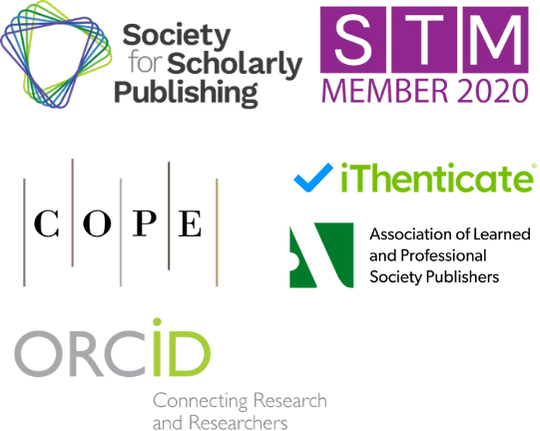Time Series Analysis for Stock Price Forecasting: Evidence from Kansai Design Co., Ltd. (603458)
DOI:
https://doi.org/10.71222/mqnkg107Keywords:
stock price forecasting, time series analysis, autoregressive model (AR), stationarity, investment decision-makingAbstract
Stock price forecasting plays a critical role in investment decision-making, particularly in emerging sectors such as engineering consulting. Kansai Design Co., Ltd. (603458), a state-controlled listed firm, has drawn growing attention with China's ongoing infrastructure expansion. However, few studies have systematically examined its stock price dynamics using rigorous time series methods, leaving a gap in empirical evidence for short-term predictability. This study employs time series analysis to investigate the company's daily stock prices from October 10, 2022, to September 28, 2023. Following the established paradigm of stationarity testing, model identification, parameter estimation, and diagnostic checking, an Augmented Dickey-Fuller test confirmed series stationarity. Autocorrelation and partial autocorrelation analyses indicated the suitability of an autoregressive model. Comparative evaluation of AR (1), AR (2), and AR (3) models demonstrated that AR (1) provided the best fit, consistent with Occam's Razor. Residual diagnostics verified white noise properties, while predictive performance metrics showed high accuracy (RMSE = 0.0519; MAPE = 0.414%). The AR (1) model closely tracked actual prices, with errors mainly driven by random fluctuations rather than systematic bias. These findings highlight the short-term continuity of stock prices and demonstrate the model's practical value as a decision-support tool. The study contributes methodological insights and offers investors evidence-based guidance while emphasizing the importance of integrating quantitative models with fundamental market analysis.
References
1. A. Lapidus, D. Topchiy, T. Kuzmina, and I. Shevchenko, "A New Direction of Professional Activity of Consulting Engineers in the Construction Industry," Buildings, vol. 13, no. 7, p. 1674, 2023, doi: 10.3390/buildings13071674.
2. A. C. F. T. Area, A. V. E. AVE, B. Index, B. S. Exchange, and L. M. Breusch-Pagan, "Augmented Dickey-Fuller unit root test (ADF unit root test), 94 Autoregressive distributed lag (ARDL), 87 bounds testing, 93," development, vol. 205, p. 207.
3. C. H. Weiß, B. Aleksandrov, M. Faymonville, and C. Jentsch, "Partial autocorrelation diagnostics for count time series," En-tropy, vol. 25, no. 1, p. 105, 2023, doi: 10.3390/e25010105.
4. Z. Jia, W. Li, Y. Jiang, and X. Liu, "The Use of Minimization Solvers for Optimizing Time-Varying Autoregressive Models and Their Applications in Finance," Mathematics, vol. 13, no. 14, p. 2230, 2025, doi: 10.3390/math13142230.
5. V. A. Mabert, and R. C. Radcliffe, "A forecasting methodology as applied to financial time series," The Accounting Review, vol. 49, no. 1, pp. 61-75, 1974.
6. J. Kaur, K. S. Parmar, and S. Singh, "Autoregressive models in environmental forecasting time series: a theoretical and appli-cation review," Environmental Science and Pollution Research, vol. 30, no. 8, pp. 19617-19641, 2023, doi: 10.1007/s11356-023-25148-9.
7. M. Fritz, T. Gries, and L. Wiechers, "An early indicator for anomalous stock market performance," Quantitative Finance, vol. 24, no. 1, pp. 105-118, 2024, doi: 10.1080/14697688.2023.2281529.
8. S. L. Alkhayyat, H. S. Mohamed, N. S. Butt, H. M. Yousof, and E. I. Ali, "Modeling the asymmetric reinsurance revenues data using the partially autoregressive time series model: statistical forecasting and residuals analysis," Pakistan Journal of Statistics and Operation Research, pp. 425-446, 2023, doi: 10.18187/pjsor.v19i3.4123.
9. C. A. Utting, I. S. Obot, and E. O. Philip, "Fiscal Policy, Private Consumption and Employment in Nigeria: An Empirical In-vestigation," 2025.
10. N. Minhaj, R. Ahmed, I. A. Khalique, and M. Imran, "A comparative research of stock price prediction of selected stock index-es and the stock market by using arima model," Global Economics Science, pp. 1-19, 2023, doi: 10.37256/ges.4120231426.
11. W. Chen, W. Hussain, F. Cauteruccio, and X. Zhang, "Deep learning for financial time series prediction: A state-of-the-art re-view of standalone and hybrid models," CMES-Computer Modeling in Engineering and Sciences, 2023, doi: 10.32604/cmes.2023.031388.
12. W. Zhu, W. Dai, C. Tang, G. Zhou, Z. Liu, and Y. Zhao, "PMANet: a time series forecasting model for Chinese stock price pre-diction," Scientific Reports, vol. 14, no. 1, p. 18351, 2024, doi: 10.1038/s41598-024-69303-9.
13. C. Zhao, P. Hu, X. Liu, X. Lan, and H. Zhang, "Stock market analysis using time series relational models for stock price pre-diction," Mathematics, vol. 11, no. 5, p. 1130, 2023, doi: 10.3390/math11051130.
14. M. C. Hung, A. P. Chen, and W. T. Yu, "AI-driven intraday trading: applying machine learning and market activity for en-hanced decision support in financial markets," IEEE Access, vol. 12, pp. 12953-12962, 2024, doi: 10.1109/ACCESS.2024.3355446.
15. E. Bulut, "Market Volatility and Models for Forecasting Volatility," In Business Continuity Management and Resilience: Theories, Models, and Processes, 2024, pp. 220-248, doi: 10.4018/979-8-3693-1658-0.ch010.
Downloads
Published
Issue
Section
License
Copyright (c) 2025 Yijing Wang (Author)

This work is licensed under a Creative Commons Attribution 4.0 International License.


